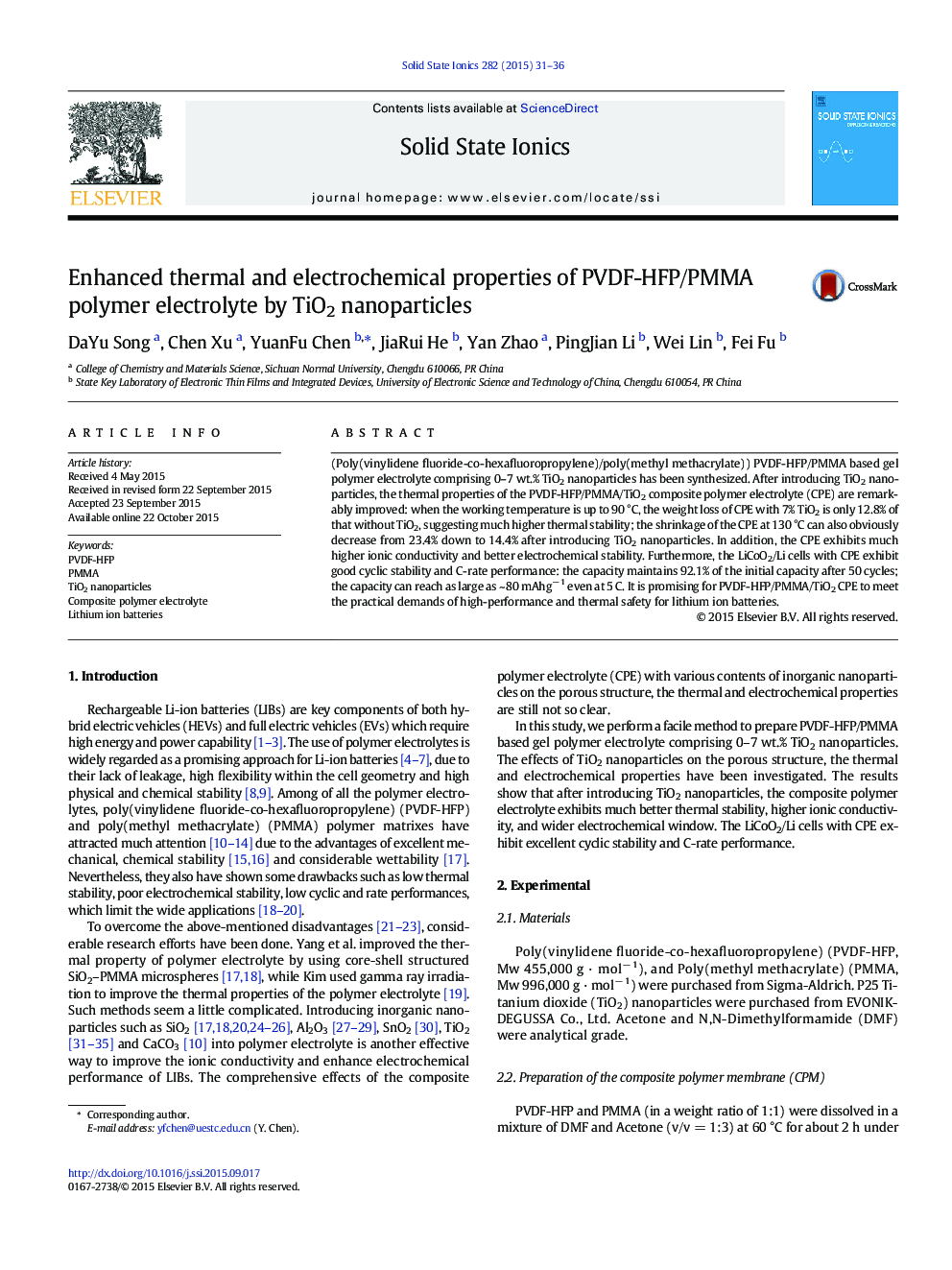| Article ID | Journal | Published Year | Pages | File Type |
|---|---|---|---|---|
| 1296243 | Solid State Ionics | 2015 | 6 Pages |
•A facile method to prepare PVDF-HFP/PMMA/TiO2 (0–7 wt.%) composite polymer electrolyte (CPE) is presented.•The CPE has reticular porous fabric with suitable pore size.•The CPE exhibits much higher ionic conductivity and wider electrochemical window.•LiCoO2/Li cells with CPE exhibit much better cyclic stability and C-rate performance.
(Poly(vinylidene fluoride-co-hexafluoropropylene)/poly(methyl methacrylate)) PVDF-HFP/PMMA based gel polymer electrolyte comprising 0–7 wt.% TiO2 nanoparticles has been synthesized. After introducing TiO2 nanoparticles, the thermal properties of the PVDF-HFP/PMMA/TiO2 composite polymer electrolyte (CPE) are remarkably improved: when the working temperature is up to 90 °C, the weight loss of CPE with 7% TiO2 is only 12.8% of that without TiO2, suggesting much higher thermal stability; the shrinkage of the CPE at 130 °C can also obviously decrease from 23.4% down to 14.4% after introducing TiO2 nanoparticles. In addition, the CPE exhibits much higher ionic conductivity and better electrochemical stability. Furthermore, the LiCoO2/Li cells with CPE exhibit good cyclic stability and C-rate performance: the capacity maintains 92.1% of the initial capacity after 50 cycles; the capacity can reach as large as ~ 80 mAhg− 1 even at 5 C. It is promising for PVDF-HFP/PMMA/TiO2 CPE to meet the practical demands of high-performance and thermal safety for lithium ion batteries.
